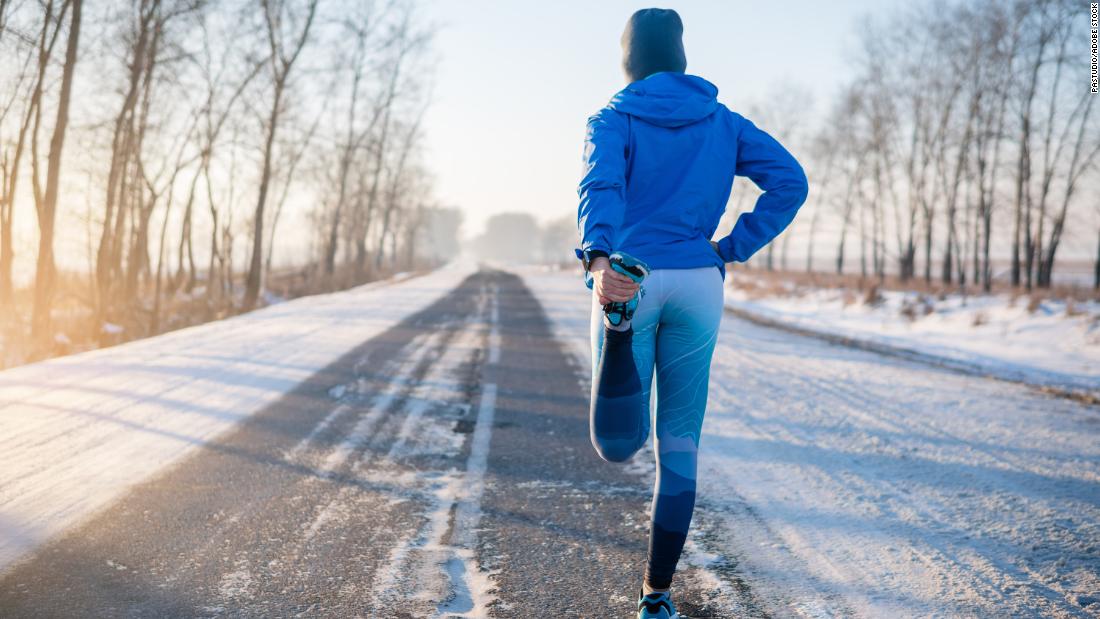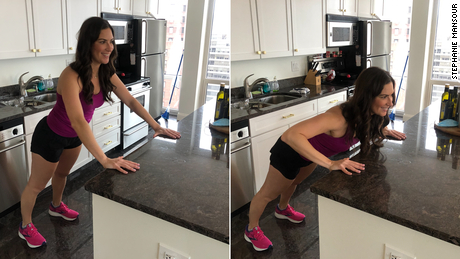“Exercising in the cold is not a health hazard and can be a healthy activity,” said Alex Tauberg, a chiropractor with Tauberg Chiropractic & Rehabilitation in Pittsburgh.
That said, it’s not hard to avoid disaster. Here are key ways to assess your risk and mitigate potential hazards once you’re outside.
Important Note: Before beginning any new exercise program, consult your physician. Stop immediately if you feel pain.
Know the temperature and wind chill
“We know that if you go out on a cloudy day where the dry bulb temperature is minus 10, it feels very different than a sunny day where it’s minus 10 but you have the solar charge,” said Mike Tipton, professor of human sciences. and applied physiology at the University of Portsmouth in Hampshire, England, and a contributor to the ACSM expert consensus statement.
But if you want to have a set number to rely on, the ACSM recommends staying inside when the temperature is below minus 8 degrees Fahrenheit (minus 22 degrees Celsius).
Be aware of your personal risk factors
Unfortunately, some people are more susceptible than others to injury or health problems when exercising in the cold. The ACSM includes men, blacks, smokers, and people with heart and vascular disease among groups predisposed to frostbite.
“People with asthma, and especially exercise-induced asthma, need to be very careful when exercising in the cold,” Tauberg said. “Asthma can be exacerbated by cold, dry air and cause asthma attacks.”
dress in layers
One of the most critical aspects of exercising safely in the cold is dressing in layers, with three being the magic number: an inner layer that touches the skin and draws sweat to the outer layers; a middle layer that serves as your main insulator; and a lightweight outer shell that repels wind and rain while allowing moisture to escape from your body.
Adjust your layers as needed
The main goal behind layering clothing is that it allows you to take your garments off as you warm up and then put them back on when you cool down.
If you don’t remove your layers while heating, you are likely to overheat and sweat. And when you sweat, water droplets fill the spaces between your layers, replacing air that helps with insulation. While you’re exercising and still generating heat, a little sweat isn’t much of a problem. But if you stop moving you have a problem, because cold air and water is a deadly combination that promotes hypothermia.
“It’s hard to keep taking things off, putting them in the backpack and then putting them back,” Tipton said. “The urge to move on is huge. But you have to fight that urge and just do it.”
Pay attention to your footwear
Some people assume that an insulated, waterproof boot or shoe is the best winter footwear. However, if you put on an insulated, vapor-impermeable shoe or boot, you’ll sweat and end up with cold, wet feet. You might even get frostbite if you wear that warm shoe, Tipton said, though if your feet are cold and wet for many hours, you’re more likely to develop a nonfreezing cold injury, such as trench foot, which can be a problem. significant. trouble.
So be sure to select vapor permeable footwear for your winter workouts. And if you’re going to walk, run, or hike where there’s a lot of ice, put on traction cleats or snowshoes.
Drink drink drink
The best thing you can do is drink before, during and after exercising. “Take frequent sips of water, don’t gulp it down,” said Sue Hitzmann, a manual therapist and connective tissue specialist in New York City. “If you drink more consistently and more often, your cells will stay more hydrated and transport nutrients more efficiently.”
Drinking 10 ounces of water every 30 minutes is the recommendation of Dr. Mark Slabaugh, a sports physician and orthopedic surgeon at Mercy Medical Center in Baltimore. “However, increased wind chill requires even higher fluid intake,” he said.
fuel properly
“If your blood sugar drops too low, you’ll lose your ability to shiver and your perception of cold,” Tipton said. “You will tend to think that you are warmer than you are.”
Stretch before and after exercising
Stretching is even more important during the cold winter months, when muscles contract to conserve heat, making them tighter and more prone to injury, said Jorden Gold, founder of Stretch Zone, a chain of stretching facilities. stretching assisted by professionals and adjunct teacher. in the Educating Hands Massage School.
“Think of your muscle like a candy bar,” he said. “A cold candy bar would rip or break if you tried to quickly bend or stretch it before first warming it in your hands.”
Gold recommends performing dynamic warm-up stretches, such as leg kicks or arm circles, for at least 10 minutes when temperatures drop to 45 degrees Fahrenheit (7 degrees Celsius). Add five minutes to that for every 10 degrees cooler. After exercising, doing some cool-down static stretches (holding a position for 30 seconds or more) will help lower your heart rate and relax your muscles, as well as improve your range of motion and flexibility for future workouts.
.


